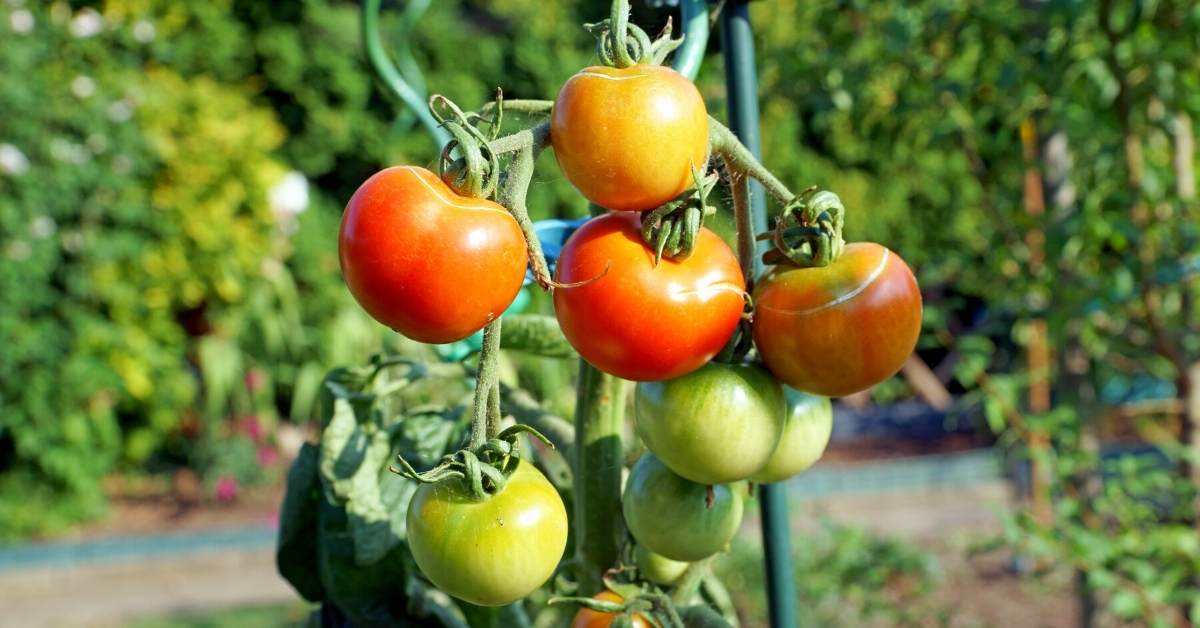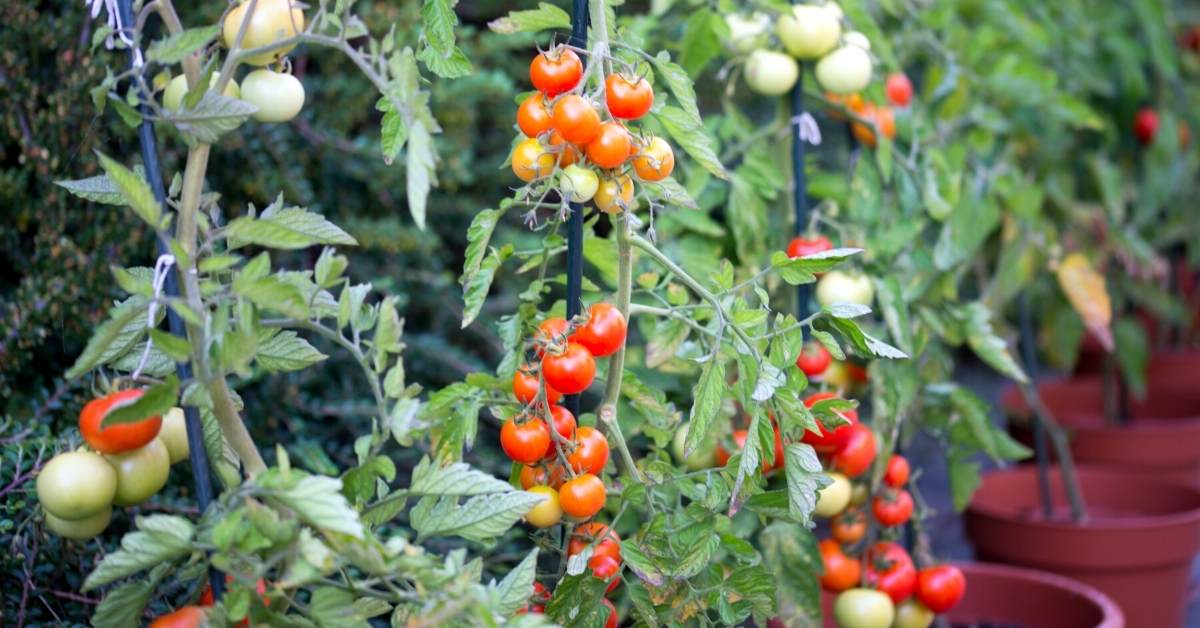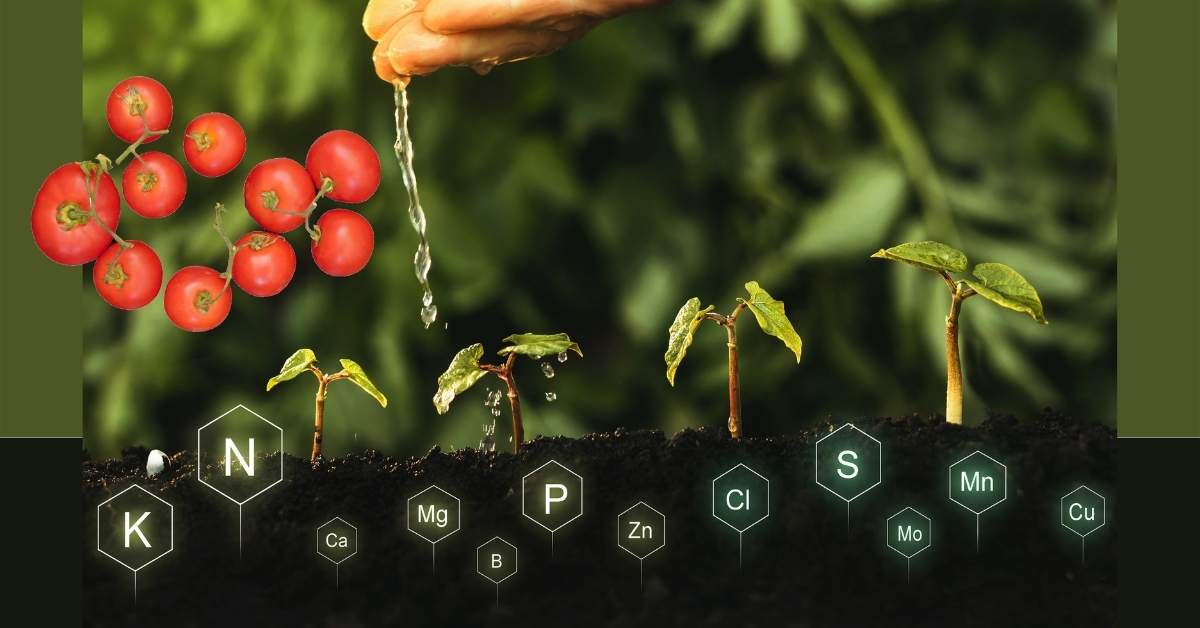When you are growing tomatoes in a Greenhouse, there are some crucial criteria you need to know and apply.
The greenhouse must have a moveable shade that can be pulled over the plant canopy when high radiation intensity.
Conditioned air flow must be only up through the plant canopy, air whose carbon dioxide content is constantly maintained at the ambient level and relative humidity less than 50% at all times.
Greenhouse Air-Conditioning
Conditioned air is best obtained from an adjacent air handling facility that collects the canopy air from the greenhouse gable for conditioning. Supplemental lighting is only needed to extend the daylight hours.
The hydroponic growing system must be a sub-irrigation system that maintains constant water and nutrient element availability. The plant nutritional status requires constant monitoring to ensure that nutrient element sufficiency is being maintained.
Attachment to the plant support system, suckering, cluster pruning, and removal of senescing leaves must be done daily, with plant material collected immediately removed from the greenhouse. Pollination is by the use of bumblebees. Harvest fruit that maintains a constant number of developing fruit on the plant.
Growing Tomatoes in a Greenhouse

Greenhouse tomato production in large-acreage commercial greenhouses and owner-operator stand-alone or multiple-bay greenhouses is increasing, providing fruit during those times of the year when field-grown fruit is not readily available.
Smaller-sized fruit (cherry and grape) or cluster tomatoes (fruit-on-the-vine) are the fruit of choice for the large commercial greenhouse operators. At the same time, the beefsteak varieties are the choice of owner-operator growers as well as harvesting when fruit can be designated as being true “vine ripe.”
Owner Operator Grower
For the owner-operator grower, timing his fruit production schedule is essential in order to be in the market when supply is short, and demand is high. Timing is equally important, depending on latitude, to avoid those periods of either low or high air temperatures and/or light conditions.
Site selection should be such that it is not easily affected by the surrounding weather factors, such as wind, cloud cover, extremes of air temperature, and at a distance and not downwind of agricultural enterprises.
Poly-covered stand-alone or multiple-bay greenhouses are typical choices with the interior greenhouse environment regulated by varying electronic control levels of ventilation and heating devices. The greenhouse ventilation system will determine the need for carbon dioxide (CO2) enrichment of the greenhouse atmosphere.
Plants may be grown in either soilless mixes in bags or in-floor benches or hydroponically in bags or buckets (BATO) of perlite or in Rockwool or coir slabs. Water and nutrient solution is delivered to the plants by drip irrigation, the nutrient solution formulation, and delivery schedule based on provided advisory services.
Do greenhouse tomatoes need pollination?

Yes. Plants may be hand-pollinated or, depending on the number of plants, by bumblebees.
The selection of disease and insect control procedures will vary depending on expected occurrence and the skill of the grower to identify and take the necessary control measures, or the grower will be dependent on others with the skill to identify and advise on control procedures by periodically scouting the greenhouse.
The daily operating routine is not on a fixed schedule but daily determined by the owner-operator based on existing conditions within the greenhouse, stage of plant growth, maturity of the fruit, and the quantity status of fruit needed to satisfy market demands.
Large-acreage Commercial Grower
For the large-acreage commercial grower, site selection is primarily based on light conditions and the availability of skilled labor. The plant schedule strategy is designed to maintain a consistent flow of generated fruit during the entire year or the selected growing period.
Greenhouses are glass-covered using automatic devices to control the interior atmosphere without the need to regularly introduce outside air, maintaining a constant level of carbon dioxide (CO2) by continuous enrichment.
Plants are grown hydroponically, the nutrient solution delivered by drip irrigation, with plants rooted primarily in Rockwool or coir slabs depending on disposal requirements of used slabs.

The nutrient solution formulation may be adjusted based on monitoring the effluent from the slabs in order to avoid the accumulation of “salts” in the rooting medium and to meet the changing requirements of the fruiting plants.
Plants are pollinated by bumblebees. The greenhouse environment and plants are continuously monitored for the incidence of insect and disease occurrence, with control measures either constantly in place, such as the use of predator insects, or introduced when an insect or disease identification is made to avoid plant loss.
Cluster pruning is practiced to maintain a consistent fruit number per cluster when harvested as cluster tomatoes and/or to ensure standardization of fruit size on each cluster.
The daily routine is based on a fixed schedule with managers and workers assigned particular tasks to ensure a steady flow of maturing fruit for packaging and shipping.


